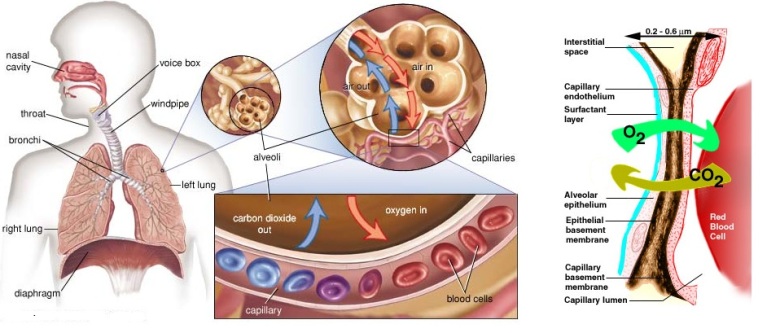Posted by Christopher Orr, Drexel University College of Medicine 2014
Ms. AB presented last week in the Neurology office with shortness of breath and weakness, and she knew it was from her myasthenia gravis.
She was already on an anticholinesterase inhibitor, but it was very apparent that she was suffering from a severe exacerbation of myasthenia gravis.
We sent her to the Emergency Room in order to be admitted so she could receive plasmapheresis in order to minimize the antibodies that were blocking the acetylcholine receptors at her neuromuscular junctions.
To give a brief history of Ms. AB’s myasthenia gravis, she was diagnosed in the Fall of 2013 when she presented with muscle weakness and difficulty breathing. She was treated with plasmapheresis during that initial episode, and improved.
In the interim, she had also been given steroids to reduce the immune response of her autoantibodies towards her acetylcholine receptors, but this actually caused increased leg weakness, more likely from steroid myopathy than myasthenia gravis.
Unfortunately she experienced another exacerbation in December, and she was treated with intravenous immunoglobulin (IVIG). What is interesting is that when she was treated with IVIG, her symptoms did not improve as they had done plasmapheresis.
There is limited research on the efficacy of IVIG in comparison to plasmapheresis in the literature. A comparison study of IVIG vs. plasmapheresis waspublished by Mandaway et. al. in the Annals of Neurology in 2010 and included 1,606 patients – both therapies showed similar clinical outcomes in terms of both mortality and complications. From a purely financial perspective, IVIG was more cost effective because of lowered length of stay and total inpatient charges.
However, a smaller study published by Stricker et. al. in JAMA in 1993 reported 4 patients who did not respond to initial IVIG treatment but later responded to plasmapheresis. There were no definite prognostic factors mentioned that might explain why plasma exchange may be better than IVIG in certain patients. The article stated further research was needed.
Ms. AB did present with myasthenia gravis at a later age of onset than is typically observed. For future studies that compare IVIG to plasmapheresis, I would be highly interested in a subgroup analysis on a patient’s age and the efficacy of the 2 treatment modalities of IVIG and plasmapheresis.
When we saw Ms. AB in the hospital, she was already doing much better with plasmapheresis. In addition, we were For the future, Ms. AB would likely be discharged to a rehabilitation facility and there are considerations to start her on CellCept (mycophenolate mofetil). It would be preferential to start the patient on CellCept as an immunomodulatory drug to decrease the autoantibodies against her acetylcholine receptors and reduce her need for plasmapheresis.
I chose to write a reflection on Ms. AB for 2 reasons. First, she and her husband are both very kind people, and it is a pleasure to see her improve. Second, I love technology in medicine and healthcare. When we saw Ms. AB’s plasmapheresis treatment, it was fascinating to see the apparatus that was using centrifugal force to spin her blood and separate her plasma from the WBCs, RBCs, and platelets. The mechanism behind performing the plasmapheresis was to take off her plasma, which had the autoantibodies, and replace new plasma with albumin. Please look below to see a picture of a plasmaphresis apparatus and an explanation of how it works. After my experience seeing Ms. AB, it was a pleasure to treat her and learn from her condition.
Pictured above is an apparatus that is used for the plasmapheresis treatments. Although this machine may seem very intimidating, it operates on the basis of how spinning blood can separate the blood into different components, such as the plasma, RBCs, WBCs, and platelets. To explain in a simple manner, a central venous line is obtained from the patient so blood can be brought to the machine and spun. After the plasma is removed by the centrifugal force, the remaining components (RBCs, WBCs, and platelets) is added with albumin and saline (a protein found in plasma) then reintroduced into the patient.
In many instances, diseases can be complicated to comprehend. I wanted to give a better understanding of myasthenia gravis. I hope this picture and caption that I included make the disease easier to digest.
The above image shows the synapse of a neuromuscular junction. In a healthy patient, the acetylcholine can bind the acetylcholine receptor and produce a response in the muscle. In a patient with myasthenia gravis, the antibody (shown in green) is blocking the acetylcholine receptor and preventing the acetylcholine in the synapse from reaching the muscle. This picture is a good educational tool because it also shows how the treatment of pyridostigmine (Mestinon) can improve a patient’s symptoms. The acetylcholinesterase (AChE, the red pac-man figure) is what degrades the acetylcholine in the synapase. Pyridostigmine is an anticholinesterase inhibitor and impedes the red pac-man figure in the picture from working. Therefore, pyridostigmine increases the amount of acetylcholine in the synapse that can reach the receptor and will improve the symptoms in an episode of myasthenia gravis.















